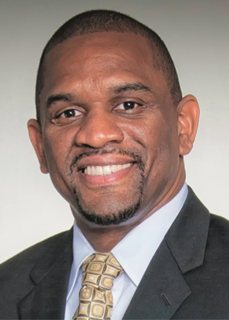First-time CEO Ronnie Ursin shares lessons learned through his experience with Tower Health

The healthcare news cycle fills up fast these days with news of mergers and acquisitions. But what really happens at ground level as organizations are acquired or come together? Ronnie Ursin, chosen as one the 10 Leaders to Watch by Modern Healthcare as part of its Top 25 Minority Executives in Healthcare program, has gotten a close-up look at one of those situations since being named the CEO at Jennersville Hospital in West Grove, Pennsylvania.
Reading Health System purchased five local hospitals from a major healthcare chain. Reading renamed itself Tower Health and hired Ursin, a former Reading executive who was working as a chief nursing officer at a hospital in his home state of Louisiana, to lead the 63-bed Jennersville facility.
“Speaking from the standpoint of Tower Health, one of the things we are working on very diligently and carefully is the organizational culture,” Ursin says. “About 95 percent of the staff at Jennersville Hospital worked in the previous culture.”
Ursin has held several “town hall” meetings with all Jennersville staff members since taking over.
“We are trying to take their feedback and put it into action,” he says. “We still have some people on the fence, but we are doing our best to communicate that we are going to do our best for our patients and staff, and we are going to do right by our doctors. That’s going to drive our success.”
Cultural implications can sometimes be overlooked in M & A as most of the attention is laser-focused on financials, yet evidence is clear that few things can derail a transaction more quickly. Taking time to work diligently and thoughtfully with all affected team members is essential, for human capital remains a company’s greatest asset.
Actions speak volumes for leaders
Jennersville’s previous owner was hampered by large financial losses at its facilities across the country. Ursin and his team have come in and targeted tangible improvements to infrastructure and equipment, demonstrating a willingness to invest in its staff and demonstrating good faith at the same time.
“We have a full plan to invest in surgical scopes and other instruments. We’re investing in getting more patient care equipment such as EKG machines, and facility upgrades. And we’re looking at potentially bringing in a Da Vinci robot device to support our service lines,” he says.
Tower Health, says Ursin, also is installing the Epic health IT system to achieve the aim of patients having just one chart across the entire health system.
Carrying through on promises builds credibility for new leaders, and employee engagement rises. That, in turn, usually translates to increased productivity, something that Ursin and Tower are conscious of.
Harnessing your board
In building a new culture, Ursin and his leadership team have help. At the board level, Ursin’s directors are carrying the message as well. Since they have been interwoven into the community for some time, their involvement carries no small weight.
“Because Tower Health is new to the community, a major part of our board members’ role is to convey the message we have about advancing health and transforming the lives of the people in our community. They are taking our initial quality initiatives and are able to articulate that to members of the community.”
Board members have greater responsibility and experience higher stakes in today’s healthcare climate. The best CEOs provide ...





